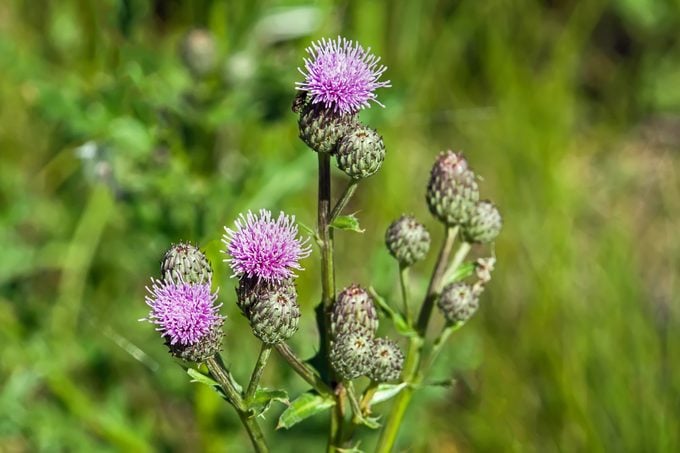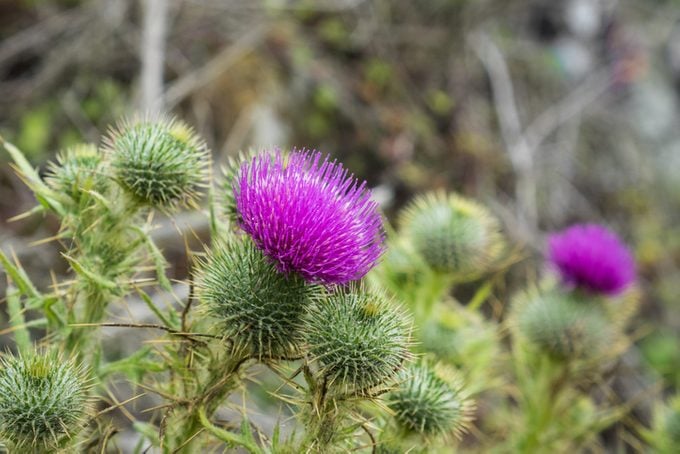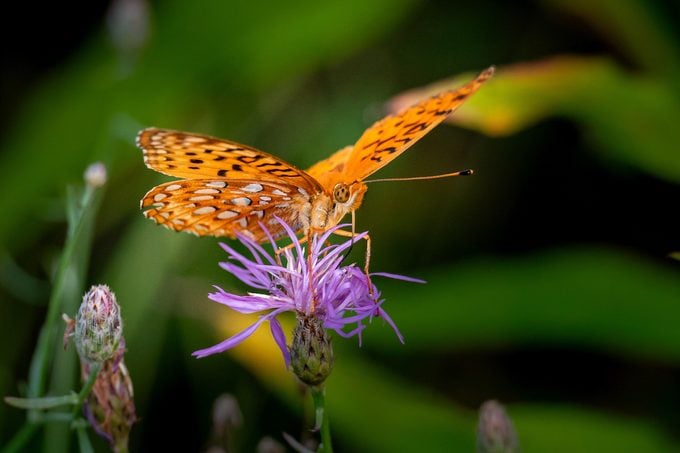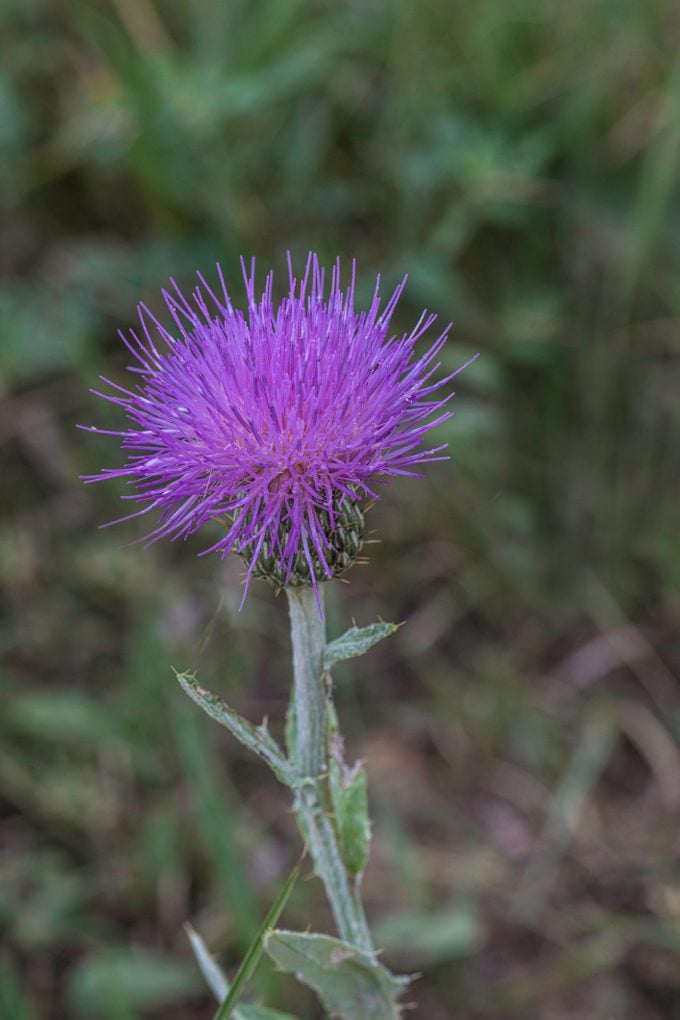Should You Get Rid of Canada Thistle?
Updated: Sep. 29, 2022
Canada thistle is an invasive plant classified as a noxious weed in many states. Learn how to manage it and get alternatives to grow.
Canada Thistle is an Aggressive Weed

“We discovered Canada thistle growing in our yard. Should we get rid of it or is it good for wildlife?” asks Birds & Blooms reader Fran Armstrong of Spring Grove, Pennsylvania.
Thistle is tricky because birds and butterflies love it, but gardeners and farmers hate it. Gardening expert Melinda Myers says, “Canada thistle (Cirsium arvense), like many thistles, is classified as a noxious weed in Pennsylvania and most other states. It’s very aggressive and displaces other native plants. These thistles can quickly infiltrate and take over the garden. Don’t let the common name fool you; this plant is not actually native to North America.”

Bull thistle (Cirsium vulgare) is another aggressive, noxious weed to watch out for. Discover 6 invasive flowers you may find in your yard.
How to Remove Canada Thistle

Melinda says, “Start managing this weed right away to get rid of it before it takes over. Remove the flowers before they can set and release their seeds. Then remove the plants or spot-treat them with a weedkiller labeled for this use. Burning, tilling and mowing early in May or June helps weaken and eventually kills existing thistles. Make sure the method you choose is safe for the rest of your plants.”
Psst—these are the worst invasive plants you should never grow.
Native Alternatives to Grow Instead

Add native plants with pollinator benefits to your garden instead. The Minnesota Department of Natural Resources recommends growing blue giant hyssop, purple prairie clover, Canada tick trefoil, rough blazing star, and wild bergamot for nectar-lovers.
Native Flodman’s thistle and wavyleaf thistle are better, more desirable alternatives for seed-eating birds like goldfinches.
Next, check out native ornamental grasses to grow for birds and butterflies.




















